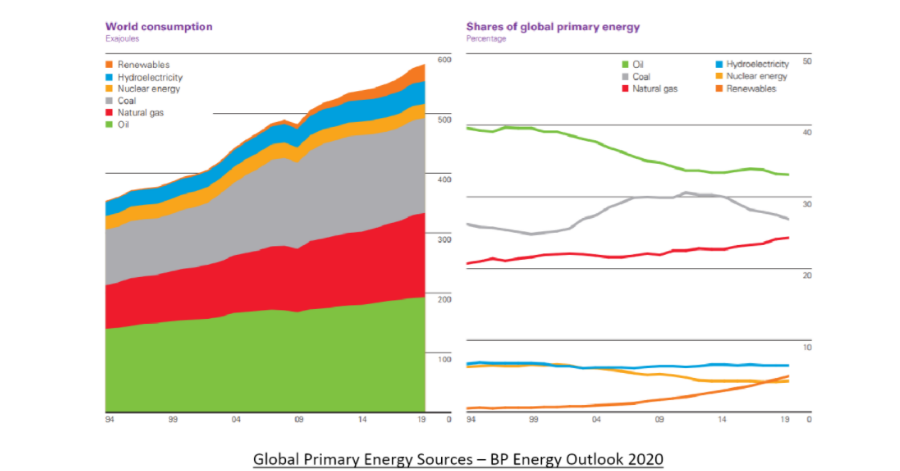By Sandeep Mukunda & Richard Rys
Hydrogen has become the latest buzz word and is being called out by many energy analysts as the most promising prospect for sustainable energy generation and as the next viable fuel to replace conventional fossil fuels in mobility, energy generation and heating application. The ongoing drive towards promoting green, zero emissions, and sustainable energy is leading to several new investments and research to develop the conceptual hydrogen-powered economies across several developed regions in the world. With zero carbon, carcinogens, or particulate emissions and off-the-chart calorific value, hydrogen is the ideal fuel over fossil fuels. However, hydrogen has been historically associated with several challenges related to production, transmission and storage, and the existing large gap in the demand side of the value chain poses several questions on the efficacy and true cost of hydrogen as a potential fuel source.
Leveraging ARC Advisory Group’s market research expertise in global energy value chain and taking a neutral approach to the matter, we are going to unravel a few of these issues and make sense of why, how, when and would hydrogen truly replace fossil fuels in the future?

Green Hydrogen Generation
More than 90% of the global hydrogen manufacturing is carried out via the ‘steam methane reforming’ process. Commonly known as blue hydrogen, steam methane reforming is widely used as low-cost means for large-scale hydrogen production. Blue hydrogen is extensively used as feedstock in the chemical manufacturing industry to produce ammonia and other application. While blue hydrogen is currently the cheapest method of production, it requires natural gas, and adding carbon capture and storage to the reforming process to limit CO2 emission would drastically increase the cost for large-scale generation.
With the ongoing proliferation of renewable energy, electrolysis of water is now being considered by businesses as the next best process for global hydrogen manufacturing. Hydrogen production via electrolysis, with the excess power generated by wind and solar, renewable energy generation would be a more sustainable and cost-effective process. Commonly known as green hydrogen, this process may soon be commercially viable as the cost of renewable energy continues to decline and increased curtailment wastes power. This wastage encountered is due to a culmination of reasons, such as the seasonal nature of wind and solar energy generation, high and low power consumption cycles, lack of transmission infrastructure from source, and cost, size and scalability issues related to current battery technology. Hydrogen production can be located close to remote renewable sites that otherwise would need expensive transmission lines.
PEM (proton exchange membrane) electrolysis process is an excellent example of the latest hydrogen generation technology through electrolysis, with efficiencies recorded between 70% to 80%. With the ongoing research in this field, the electrolysis process’s overall efficiency is expected to enhance further with time, and the cost of electrolyzers will drop with manufacturing volume.
Green Hydrogen Transmission and Storage
The real challenge of a hydrogen value chain would be the compression, transmission and storage in a cost-effective manner. The present pipeline infrastructure designed for natural gas may not be suitable for hydrogen transmission due to hydrogen weakening the steel used in pipelines, although some hydrogen is allowed in existing natural gas pipeline lines at very low levels. With the transmission of hydrogen at high pressure, temperature and concentration would lead to structural flaws, like metal embrittlement, blistering, decarburization, grain boundary fissuring and ultimately fail, especially in low carbon and low-alloy steel pipelines, which are commonly used for oil and natural gas transmission. Also, fugitive emissions and seepage from pipes and process control equipment, such as valves, would lead to potentially hazardous work conditions in process plants. There is a need to establish a new infrastructure exclusively for hydrogen service of superior quality, which would lead to higher cost and time.
Hydrogen Consumption
Heating
Natural gas has been the favored energy source for heating amongst the masses, in residential and commercial, due to the low cost and clean-burning capabilities. Hydrogen completely replacing natural gas for heating is highly unlikely in the immediate future. The impending challenge is the cost and time needed for replacing the current infrastructure for hydrogen service on a residential and commercial level. However, blending hydrogen with natural gas at a very low level is the most feasible option for immediate usage, and this can be taken as one silver lining.
Power Generation
Hydrogen can be blended with methane in existing natural gas-based peaker plants, pure hydrogen gas turbines, or electrolyzers. These then can be used to manage peak load in commercial and domestic power applications and as a secondary source for energy storage in industries and data centers with solar and wind power generation capabilities.
While storing hydrogen in quantities to run a peaker plant for days would be expensive, using lithium batteries for that task may be more expensive. Green hydrogen can be used to produce ammonia and can displace natural gas in cement and steel industries. Hydrogen can also be used to capture CO2 from smokestacks and make methane, which can be in turn used to produce methanol, gasoline, or diesel at the behest of more cost and energy.
In the competition of battery technology vs hydrogen as a secondary source of energy, efficiency and cost are the two main factors to consider. The overall round trip efficiency of green hydrogen is about 40% today, whereas Lithium batteries have a round trip of about 95%. Hydrogen efficiency is increasing, and some lower-cost grid-scale batteries, like the Ambri battery, are about 80% round trip while pumped hydro storage is roughly 65%. The cost of green hydrogen starts to look more favorable as the storage duration expands from hours to days. Hydrogen is both compressible and has the flexibility to be converted to other highly dense fuels with limited storage capacity, whereas lithium batteries’ size and cost scales linearly with the capacity. Flow batteries, like vanadium redox, need only large space for long durations power storage, but vanadium’s cost is much higher than that of green hydrogen. Long-term energy storage (days or weeks) is where hydrogen flexibility shows great promise for both manufacturing and power generation applications.
Mobility
Viable powerplants for vehicles with hydrogen as a fuel is either hydrogen-based internal combustion (IC) engines or fuel cells. In the ongoing debate between hydrogen IC engines vs fuel cell technology, ARC finds fuel cells as the ultimate winner due to practically zero emissions, higher relative efficiency and possible vehicle to grid power generation. The current fuel cell technology has the highest recorded operating efficiency of about 60%, in comparison to 25 to 30% of IC engines, and is anticipated to increase with ongoing research.
The ongoing proliferation of electric vehicles would be the biggest challenge for the growth of hydrogen-powered fuel cell vehicles. The growing network of charging infrastructure, rapid charging capabilities and innovation in battery technology for cars is reducing customer’s apprehension of electric vehicles, such as range anxiety, high cost and longevity.
On the flip side, unlike limitations associated with electric vehicle’s battery life, fuel cell powered vehicles can generate and supply power for domestic consumption and potentially back into the commercial grid. This would only be possible with the large-scale implementation of smart grids by utility companies or by the government. A hydrogen-powered vehicle of the future could be either a standalone fuel cell powered vehicle or a hybrid with plugin charging technology, with a considerable reduction in battery size to the present-day technology
Conclusion
Key takeaways:
- Renewable energy sources, such as wind and solar, can replace conventional fossil fuels usage in power generation applications, and hydrogen can only enable that transition.
- Hydrogen generation is only sustainable and scalable when excess energy produced by wind and solar generation is effectively utilized.
- ‘Green Hydrogen’ as a viable secondary source of energy will reduce the dependency on oil, natural gas and battery technology. Future improvements in efficiency, and cost of hydrogen production, distribution, and use for industrial application and grid energy storage are needed to kickstart the hydrogen economy.
- The current pipeline infrastructure existing around oil and natural gas may not be suitable for the usage of hydrogen at a high concentration. New pipeline projects need to be established for large-scale hydrogen transmission.
- Keeping the hydrogen prices lower than gasoline is crucial for the success of fuel cell powered vehicles over conventional IC engine cars.
- The success of the hydrogen economy is highly dependent on how aggressively the energy economy shifts to renewables. However, a breakthrough in other energy storage technologies or battery technology would further push the timelines of hydrogen-based mobility and secondary power generation.
- Governments need to incentivize the necessary infrastructure with financial subsidies to promote the essential change in infrastructure to kickstart green hydrogen usage.
Presently, there is a large gap in the consumption value chain of the hydrogen market. However, the digital transformation renaissance transpiring in the technology market is leading to the electrification of several products from mechanical and electro-mechanical systems across various businesses. This would enhance the demand for electric-powered products and possibly the usage of fuel cells.
However, a hydrogen economy would take at least a decade to gradually gain traction, globally. In the meantime, natural gas will play a key role for the grid to support non-dispatchable renewable power generation. Coal, oil and gas will remain a significant source of energy across several regions in the next decade. A hydrogen-based energy system is challenging in developing economies that already have a capital deficit for creating an electric grid, for gird modernization or developing renewable energy. That said, it might be possible to run farming infrastructure from renewables using hydrogen for ammonia fertilizer and to operate machinery without a larger grid.
The consumption value chain is just starting across regions, such as Western Europe and Japan. California and Ontario are highly likely to be the vanguard for developing a hydrogen-based economy in North America. Few notable examples of early adapted promoting hydrogen technology are:
- The Essen, Germany-based ThyssenKrupp, which is part of the new green hydrogen consortium that recently received a 30 million euro grant from the German government and is working on an 88 Megawatt electrolyzer project with Quebec Hydro
- Bloom Energy, headquartered in San Jose, California, is expanding out of methane fuel cells into hydrogen
- Ontario-based Enbridge is blending natural gas with low levels of hydrogen (below 2%) for residential heating application.
These companies are paving the way for hydrogen and a sustainable energy network with net-zero carbon emissions for the future.





Comments